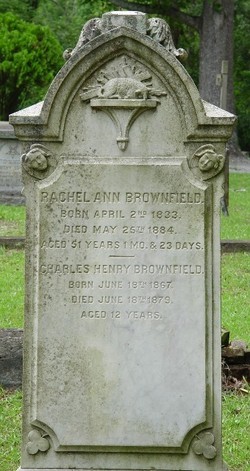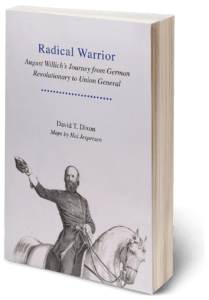How do historians find compelling characters for biography? Trade publishers tend to play it safe, focusing on authors writing about A- list subjects viewed from a different perspective. Many of these works end up providing readers with fresh insight into a seemingly inexhaustible thirst for stories about dead white presidents, royalty, and military leaders. I certainly enjoy a book like Lincoln’s Virtues: An Ethical Biography by William Lee Miller much more than another pop culture rehash like the recent Killing Lincoln and that ilk. Unless some newly-discovered diary or other primary source comes to light on Old Abe, it is hard to imagine much new scholarship coming down the pike that is more than either reduction or revision.
So where can historians turn to find untold stories that are worth telling about new subjects? Rebecca Skloot (The Immortal Life of Henrietta Lacks) proved that entertaining and innovative biography can emerge from the most unexpected sources. She found her amazing subject in a test tube and held her readers in suspense as she wove together genetic therapy and human interest into something entirely original and important. Such subjects and stories are much harder to uncover than the bones of Richard III, but even the much maligned hunchback king himself could not have been rescued from his ignoble resting place below an asphalt parking lot without the careful archival work of a dedicated local historian. The parade and reburial will be long-forgotten by the time some enterprising researcher uses DNA and forensic examination to craft a new interpretation of this much-studied figure.
With slave biography, as I discussed in my last post, the challenges are immense. There are probably few potential subjects left with enough verifiable life data to produce a book-length treatment; however, there are many ghosts of former slaves whispering in the dreams of interested scholars, ready to reveal their secrets and inspire quality articles. As most historians are not trained in the art of the séance, serious seekers need to return to the gravesites of all great sources: the archival record. Perhaps my own journey of discovery to produce a recent modest study in Georgia Backroads magazine illustrates this point.
One of my favorite archival graveyards is a set of records that was just becoming popular about fifteen years ago when I was studying for my M.A. in history at UMass Boston. My interest in Civil War Union supporters in Floyd County Georgia led me to examine the voluminous records of the Southern Claims Commission and the U.S. Court of Claims. Many families in the South stayed loyal to the Union during the war, and most were rewarded by having their farms and homes plundered by foraging U.S. troops. If they could prove that they were true to the old Star Spangled Banner for the duration of the conflict, the government offered to pay for some of the damages they incurred from the hungry armies living off the land in their ravaged region. The beauty of these accounts, mostly sworn depositions, were that they included not only white male property owners, but women, children, free blacks and even ex-slaves. Few contemporary sources contain the voices of these forgotten people, and they have become a much mined source of new information on many aspects of the Civil War home front experience.
After developing six or seven decent articles out of my thesis research, my idea file had become a little sparse. My paying job did not afford me much time to dive into various archives on the off chance I would find a worthy subject. Fortunately, the family history website Ancestry.com has placed some scanned files from the Southern Claims Commission on their site. They are a wonderful resource, even if one’s purpose is pure genealogy. Having found so many interesting stories in its tattered folders in the past, and having read most of the Floyd County files cover to cover, I shifted my focus to Savannah, thinking that perhaps Chatham and surrounding counties might yield an interesting figure or two. I wanted a slave subject to challenge myself and see how much I could learn. Rachel Brownfield stepped into my web browser and filled the bill.
The first thing I noticed about Mrs. Brownfield was the size of her claim and the subsequent award. Rachel claimed over $1659 in damages from the Union army occupation of her boarding house after Sherman entered the city in December 1864. This seemed like a very large amount for a slave woman. The skeptical commissioners, most unfamiliar with the widespread practice of slaves hiring out their own time, awarded her only $253.70. Her loyalty, however, was hardly in question. Her testimony that she visited Union prisoners and secreted escaped soldiers in her home and place of business was supported by numerous credible witnesses: black and white, slave and free. This story was getting juicier by the minute, so I decided to do an in-depth web search on my potential protagonist. Using various spelling variations and a lot of patience, I managed to find several leads. One was quite promising.
The papers of former attorney William Wiseham Paine are housed in the Georgia Historical Society archives in Savannah. Having published in their quarterly journal some years previous, I had a few contacts willing to help me view this collection while sitting at my computer in California. What I found was wonderful and helped me fill in many of the details of this enterprising slave woman’s life. The documents even allowed me to name her white plantation owner father without the DNA evidence that Skip Gates might use on his prime time family history show. Rachel Brownfield hired three different lawyers to recover money stolen from her from a particularly unscrupulous master. It was all for naught. She estimated her tidy fortune, much of which she spent trying to purchase her freedom and that of her children, at $16,000. Whether this amount was exaggerated, we will probably never know. What is certain is that few persons of color in the state achieved anything close to her level of affluence, even after she was cheated out of most of it late in the war.
When I learned that Rachel and her slave husband had been married by Savannah’s Catholic Vicar General Father John Francis Kirby, I contacted the Archdiocese of Savannah. Of course, no record of this illegal marriage exists, but the baptism of one of Rachel’s sons in 1867 was confirmation of this slave family’s religion and corroborates her deposition statement.
With my appetite for knowledge about this unusual slave and her family growing more intense with each new document, I decided that a trip to the Georgia Archives was warranted. There I found a wealth of information of Rachel’s property transactions, both during and after the war, as well as her detailed will and estate records. Census records and other typical online resources filled in the picture of Rachel’s family life during Reconstruction and gave me enough data to build a reasonably full account of her life and her many challenges.
Sadly, my many efforts to find descendants brought little payout, and certainly not the most anticipated undiscovered treasure – a photograph of the woman herself. All I had was a modern image of her lavish cenotaph, still standing unblemished in the black section of the most prestigious 19th century white cemetery in the city. Few would guess that the woman buried there was an ex-slave. I like to think that the elaborate monument was a way for her to permanently turn up her nose in perpetuity at the white society who had taken so much from her and her family.
Such stories may never reach a broad audience, nor profile this slave woman and her family with the degree of depth or certainty that studies of more well-known white property owners produce. Yet these brief vignettes serve an important purpose. By aggregating numerous such stories, carefully researched and verified, scholars and readers can look forward to an enhanced understanding of various aspects of the slave experience: white rape of slave women, religious collaboration with white churches, the activities of slave entrepreneurs, and many other interesting topics.
Subscribers to my monthly newsletter may download the complete pdf article, “The Wealthiest Slave in Savannah: Rachel Brownfield and the True Cost of Freedom.” This and all my published articles are available free.
NEXT POST: My Favorite Slave Biographies




Looking for relatives of this woman.
I am a decendant of Rachel Brownfield. There are a lot of us. I am looking for more. Wish I could find a picture of my great and great great grandmother.
I have been working with DNA to trace down decendants. I have found numerous DNA matches to myself. Most of us all go back to Rachel’s dtr Margaret. My grandfather, her son, passed for white and lived that way. We also have decendants of color that match DNA, still looking for a way to document the connection. We have no pictures as of yet. This article was been heaven sent. Thank you for writing about my great great grandmother.
My husband, Thomas Moore, is not a descendant of Rachel, but of her father John Moore, and we were transfixed by the discovery of her heroism and place in the Moore family. Just this week, we took a trip to Savannah and visited her boarding house and gravestone, where we left flowers to honor her remarkable life. We would love to be in contact with other relatives of John Moore and Rachel Moore Brownfield. Mr. Dixon’s excellent research has illuminated so much about her history and that of our family.